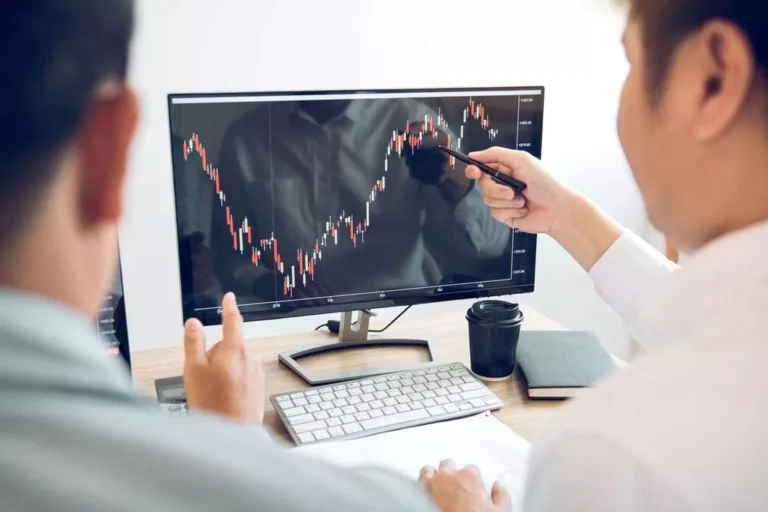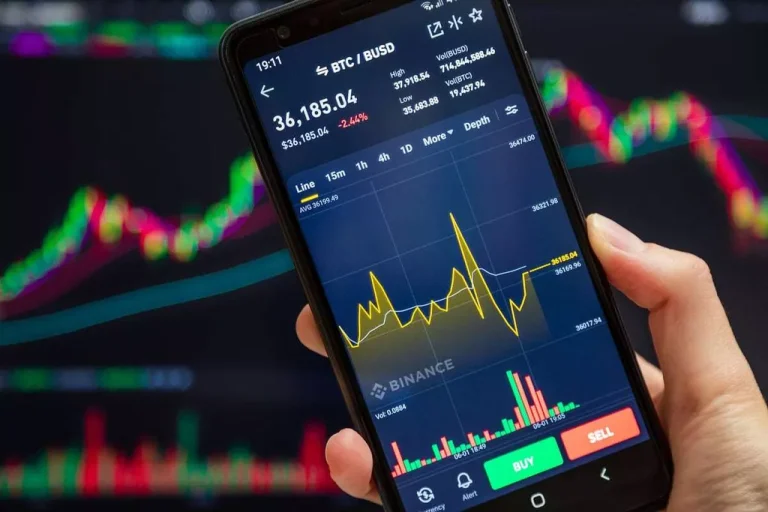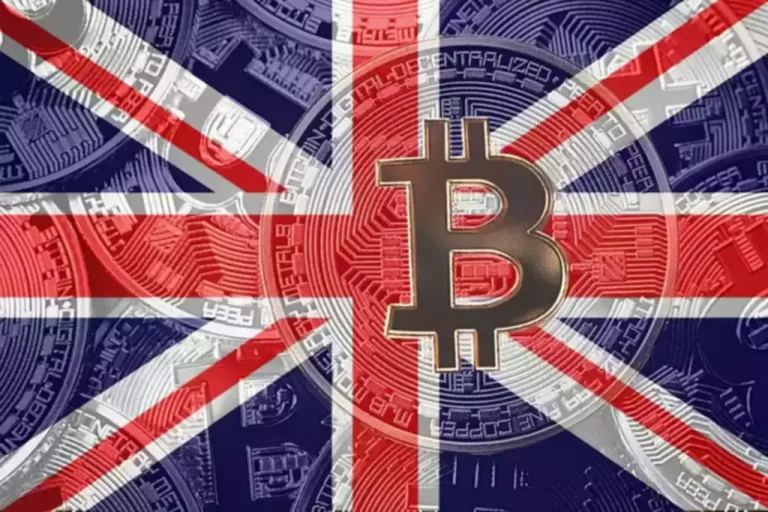Users commerce towards the smart contract (pooled assets) versus directly with a counterparty as in order e-book exchanges. For instance, you've liquidity pools in a place of the trading pairs, and liquidity providers could tackle the role of market makers simply. At the identical time, AMM protocols also convey some risks such as impermanent loss and possibilities of compromised sensible contracts. Learn more about Automated Market Maker or AMM protocols and identify new, effective approaches for trading your crypto holdings.

You can use them in many types of cost, or commerce them within the decentralized trade. Similarly, you'll find a way to solely ship property to the AMM's pool through the AMMDeposit transaction type. AMMs’ algorithmic protocols and liquidity pools have changed conventional order book models, providing a decentralized and environment friendly trading experience. While AMMs include automated market makers crypto sure challenges and limitations, their advantages outweigh these concerns, making them a vital component of the DeFi ecosystem. SushiSwap is a well-liked fork of Uniswap which provides comparable features similar to buying and selling, staking, and liquidity swimming pools. However, it differentiates itself by having a multi-chain strategy with help for over 16 blockchain networks.
Liquidity Swimming Pools And Liquidity Providers
In essence, the liquidity swimming pools of Uniswap at all times maintain a state whereby the multiplication of the value of Asset A and the worth of B all the time equals the identical quantity. When you commerce against an AMM, the change rate adjusts based mostly on how a lot your commerce shifts the stability of property the AMM holds. As its provide of one asset goes down, the value of that asset goes up; as its supply of an asset goes up, the price of that asset goes down. Automated Market Makers (AMMs) provide liquidity within the XRP Ledger's decentralized change. As AMMs operate without human interaction, there's a possibility of bugs and glitches occurring with sensible contracts.

The specialist course of exists to make sure that all marketable trades are executed at a good price in a timely method. At its core, an Automated Market Maker is an algorithmic protocol that allows the autonomous and steady buying and selling of digital property without the necessity for conventional market-making mechanisms. Unlike the conventional order book mannequin used in traditional finance, where patrons and sellers place orders, AMMs rely on liquidity pools to facilitate trading. Another factor that you should learn about AMMs is that they are perfect for arbitrageurs. For those which are unfamiliar with this term, arbitrageurs revenue off inefficiencies in financial markets. They buy assets at a lower price on one trade and sell them instantly on another platform providing slightly higher rates.
Significance Of Liquidity
Uniswap, Curve, and Balancer are outstanding first-generation automated market makers, however they don't seem to be without their defects. Balancer presents multi-asset pools to extend exposure to different crypto assets and deepen liquidity. With centralized exchanges, a purchaser can see all the asks, corresponding to the prices at which sellers are willing to promote a given cryptocurrency.
Curve Finance is one other prime contender in the AMM space, focusing particularly on stablecoin trading. Its low-cost and low-slippage swapping between stablecoins is a major draw for traders on the lookout for efficient and cost-effective buying and selling choices. Additionally, Curve makes use of a liquidity aggregator model, allowing customers to contribute their assets to various pools and earn rewards from transaction fees. With over 2.2 million customers, PancakeSwap is the biggest AMM on Binance Smart Chain. Its give consideration to low charges and quick transactions has attracted many merchants to the platform.
Uniswap 3.zero permits customers to set price ranges where they want their funds to be allotted. This is creating a far more competitive market for liquidity provision and can probably lead to greater segmentation of DEXs. Traditional AMM designs require large quantities of liquidity to achieve the identical stage of price influence as an order book-based change. This is as a outcome of of the reality that a considerable portion of AMM liquidity is out there only when the pricing curve begins to show exponential.
Larger Market Access
This results in very excessive capital effectivity, but with the trade-off of requiring active participation and oversight of liquidity provisioning. The third change happens to buying and selling charges and the way these fees are distributed to liquidity providers. In Uniswap-v1 and v2, all pools have a uniform trading fee of zero.3% and these had been https://www.xcritical.com/ mechanically added to the liquidity pool inflicting \(k\) to broaden over time from charges alone. In v3, multiple pools can exist for the same token pair with various charges, with 0.05%, zero.3% or 1% being the initial charge tiers (with the capability to add extra tiers).
Liquidity suppliers then receive LP tokens towards their deposits which represent their share in the liquidity pool. Another notable entry among Automated Market Makers in present occasions would check with Kyber Network. As a matter of truth, Kyber Network is among the oldest AMM protocols available within the market. Interestingly, professional market makers care for managing the liquidity swimming pools of Kyber Network.

The part "The geometry of a CPMM" introduces some basic tools of economic modelling—homogeneous features, homothetic functions and Euler’s theorem—as properly the geometric properties characterizing these instruments. One method to do that is through an on-chain order book where each order is recorded on the blockchain, however this could be costly. An alternative strategy entails constructing an off-chain order e-book, which solely makes use of the blockchain for settlement, but orders are recorded elsewhere (possibly by some centralized third-party). This is inexpensive, but also less decentralized and secure compared to an on-chain order e-book (Schär 2021; Pourpouneh et al. 2020). The Tokyo Exchange Group mixed the Tokyo Stock Exchange and the Osaka Securities Exchange into one unit in 2013. In addition to infrastructure and knowledge, the group offers "market users with dependable venues for buying and selling listed securities and derivatives devices."
The progress of centralized exchanges similar to Coinbase has been fairly commendable. Market makers facilitate a smooth move of market exercise by making it easier for investors and traders to purchase and promote. Without market makers, there might be inadequate transactions and fewer alternatives to invest efficiently. Many exchanges use a system of market makers who compete to set one of the best bid or supply so they can win the business of incoming orders. But some entities, such as the New York Stock Exchange (NYSE), have what's known as a chosen market maker (DMM) system as a substitute.
The Geometry Of A Cpmm
9, if the liquidity place turns into active at \(F\) and the worth strikes through arc \(CF\) before exiting at \(C\), the common worth for exchanging \(X\) to \(Y\) is then given by (34). In a CPMM such as Uniswap, the product of the quantity of two tokens in a liquidity pool is a constant. The example examined right here replicates and extends the one developed within the unique Uniswap-v1 whitepaper. When needed, we are going to introduce the modifications caused in Uniswap-v2, and how this impacts the workings of the CPMM platform. This implies that the price of an asset can drastically change in the course of the trade execution and it could significantly affect the result of the commerce. To avoid slippages, transactions must be executed as instantaneously as potential.
The amount that a liquidity supplier can withdraw from an AMM relies on the proportion of the AMM's LP tokens they maintain in comparison with the whole variety of LP tokens outstanding. Additionally, SushiSwap’s use of smart contracts ensures that trades are executed rapidly and efficiently with out the necessity for a centralized middleman. Its token, SUSHI, is earned through liquidity mining and can be used for voting on governance proposals. When a consumer needs to trade on the decentralized trading platform, they interact directly with the AMM, swapping one token for one more at a worth determined by the liquidity pool’s algorithm.
With a bigger variation, you're prone to incur an even bigger impermanent loss. Therefore, Automated Market Makers usually work effectively for token pairs which have equivalent values, corresponding to wrapped tokens or stablecoins. In the event of a relatively small vary of the value ratio between a token pair, the impermanent loss turns into negligible. A market maker performs a key role within the securities market by providing buying and selling services for buyers and boosting market liquidity. Specifically, they supply bids and provides for securities, together with the market dimension. A market maker may also be a person dealer, who is often often known as a neighborhood.

It would take a big worth shift to absorb the vast majority of liquidity so the overwhelming majority of capital inside the AMM model is deployed inefficiently, basically doing nothing. Despite this everybody nonetheless earns fees in proportion to what they contribute to the overall pool. The depth of the actual market you wish to commerce into - the obtainable liquidity - will determine any slippage in the value as you execute an order. You can use crypto value aggregators like Coinmarketcap or Coingecko to get a sense of the market depth obtainable for swapping a selected coin.
Market makers should function under a given change's bylaws, that are accredited by a country's securities regulator. In the United States, that regulator is the Securities and Exchange Commission (SEC). The rights and responsibilities of market makers range by change and by the sort of financial instrument they commerce, corresponding to equities or options. A market maker should commit to constantly quoting costs at which it will buy (or bid for) and promote (or ask for) securities.
Moreover, charges are no longer added to the liquidity pool, and are stored separately. One would expect that, over time, this will also be conditioned by the extent of competition that exists between AMMs providing related providers. On a ultimate note, it is clearly evident that Automated Market Makers have a vital role in defining the inspiration for the way forward for crypto trades. AMMs are protocols that can allow investors to buy or sell crypto on decentralized exchanges with out counterparties for the commerce.
